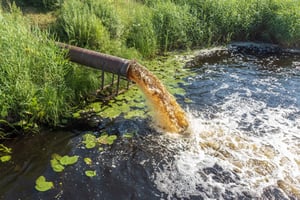Safety Data Sheets, or SDS, provide crucial information on the hazards of working with certain...
Understanding EPA Biodegradability Label Statements on Pesticides
The agrochemical industry is an enormous sector that has faced consistent scrutiny for the previous decade. Now, there are many regulations regarding the development of agrochemicals; however, these stringent regulations are in place for good reason. Agrochemicals can lead to the contamination of ground and surface water sources, subsequently, they can be detrimental to the survival of aquatic biodiversity. Pesticides are an example of one specific group of agrochemicals that has seen intense scrutiny.
Due to this, pesticide and pesticide ingredient manufacturers continue to look for ways to certify that their products are environmentally friendly. One way they can do this is by getting their product certified through the Environmental Protection Agency (EPA).
EPA's Definition of "Pesticide"
The Environmental Protection Agency defines the term "pesticide" in the Federal Insecticide, Fungicide, and Rodenticide Act (FIFRA). According to this definition, pesticide means any substance intended for:
- preventing, destroying, repelling, or mitigating any pest;
- use as a plant regulator, defoliant, or desiccant; or,
- use as a nitrogen stabilizer.
Pesticide products also contain both "active" and "inert" ingredients.
Active Ingredients
An active ingredient is a chemical in a pesticide product that acts to control pests. These prevent, destroy, repel, or mitigate pests, or are plant regulators, defoliants, desiccants, or nitrogen stabilizers. The categories an active ingredient can fall under are: Conventional (all ingredients other than biological pesticides and antimicrobial pesticides), Antimicrobial (substances or mixtures of substances used to destroy or suppress the growth of harmful microorganisms), and Biopesticides (types of ingredients derived from certain natural materials).
Inert Ingredients
Inert ingredients are chemicals, compounds, and other substances which often include food commodities and other natural materials. While the name may sound harmless, this does not imply that they are environmentally friendly. All inert ingredients must be approved by the EPA before they can be included in a pesticide. Inert ingredients are intentionally added to pesticide products and often play a key role in pesticide effectiveness and product performance. These ingredients may improve active ingredient penetration, ease of application, shelf life, excess degradation, and applicator safety.
Biodegradability Claims on Pesticide Products
Recently, the Office of Pesticide Programs within the EPA has started a pilot program to allow label statements regarding environmentally preferable characteristics of registered pesticide products. The main scope of this revolves around biodegradability claims. Since biodegradability is a critical concern with products that can be toxic in aquatic environments, such as pesticides, the EPA has developed criteria and standards to incentivize the development of entirely biodegradable products. The "All Ingredients" claim is one of these claims. An example of using this claim would be "100% Biodegradable. All ingredients in this product are readily biodegradable in water."
All Ingredients Claims
There are two criteria for obtaining an "All Ingredients" claim for a pesticide product. All ingredients in basic and alternative formulations for a product must meet criterion 1. Additionally, the product as a whole must meet criterion 2.
- All surfactants must pass the screen using the Safer Choice Criteria for Surfactants, which considers biodegradability as well as aquatic toxicity. All other ingredients must achieve a passing level in a Ready Biodegradability Test (see accepted test methods below)
- The product cannot contain any ingredients considered carcinogens, mutagens, or reproductive toxicants by one of the authorized bodies listed in Tables 1, 2, or 3 listed here.
Acceptable Test Methods
- OECD 301A: DOC Die-Away
- OECD 301B: CO2 Evolution
- OECD 301C: Modified MITI (I)
- OECD 301D: Closed Bottle
- OECD 301E: Modified OECD Screen
- OECD 301F: Manometric Respirometry
- OECD 310: CO2 in sealed vessels
- OCSPP 835.3110
- OCSPP 835.3140
Summary
Regulating the environmental friendliness of "down the drain" products, such as pesticides, is critical for ensuring the development of sustainable products. The EPA's Office of Pesticide Programs has recently taken a step forward by implementing a program that allows pesticides to be labeled as biodegradable. To achieve this claim, all ingredients in the product's formulation must meet passing levels of biodegradability according to OECD or OCSPP testing methods and cannot contain carcinogens, mutagens, or reproductive toxicants as defined by the EPA.
About the EPA
To learn more about the EPA along with their mission, vision, and locations, visit the About EPA website.




